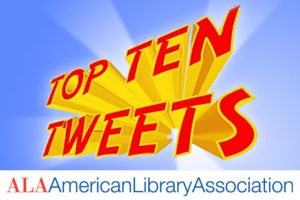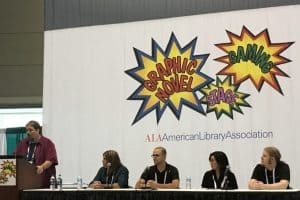
The “Creating Dynamic Programs and Events at Your Academic Library” session presented multiple examples of programs conducted at university and community libraries. A central theme each speaker addressed was money and funding. Each panel member acknowledged that money is often a problem when it comes to academic programming; however, they also stressed that great programs can be put on with little to no money.
How? By developing partnerships with other units like faculty, student life, and even the local community. “Being creative is also a significant factor,” said April Sheppard, assistant director for public services at Arkansas State University, Jonesboro.
In her portion of the discussion, Sheppard described how a monthly game night developed through donations from various publishers. This event became a part of a public programming initiative to bring the university and the community together. “Nowhere else do you see a freshman and a senior citizen bond over a game board,” said Sheppard gleefully.
Madeline Charney, sustainability studies librarian at the University of Massachusetts–Amherst, advised on developing programming that does not resemble classroom lectures. Describing how she integrates and promotes embodied learning in her ongoing programming regarding climate change, Charney explains that event participants are encouraged to participate in small-group discussions and reflective writing sessions, rather than just sitting and listening to another lecture. Though guest lecturers are invited to speak, the program consists largely of storytelling and film-viewing.
Lorene Flanders, dean of libraries at the University of West Georgia in Carrollton, talked about a creative program series focusing on World War II. Panel exhibits showcased artifacts from community members, who were eager to share their stories. “Swing Time” involved a collaboration with the university’s jazz band, which performed a musical number of pieces from that era. Flanders explained that at first the library planned on hiring a band from Atlanta, but the University’s band director offered his services, which helped them not only cut costs immensely, but also bridged an intercampus relationship. Attendees, which included the university as well as the community, were encouraged to dress the part. Flanders says the best part was “seeing people dance together—from World War II veterans to elementary schoolchildren.” Mostly, it provided an opportunity to facilitate active learning, Flanders explained.


